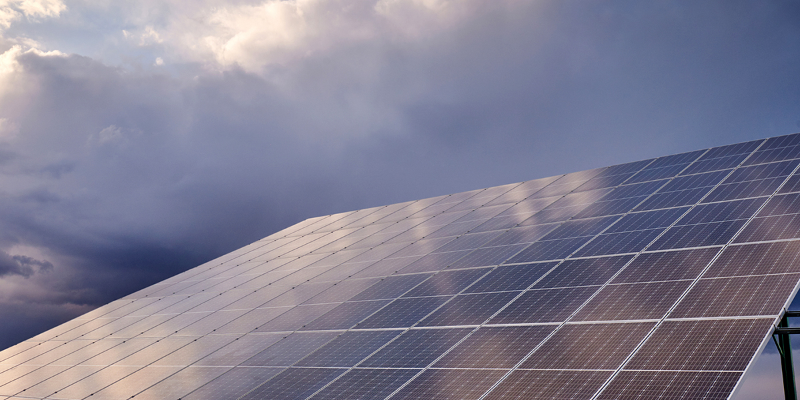
Solar was the leading source of new electric generating capacity installed in the U.S. in 2019, representing 40 percent of all new U.S. electricity capacity. Prior to the COVID-19 pandemic, the industry expected a record 2020 with solar capacity growth of 18.6 gigawatts—an increase of 45 percent over 2019, according to a recent Wood Mackenzie report.
“While pandemic-related disruptions are expected to slow some near-term growth, solar photovoltaic (PV) systems will play a vital long-term role in the growing share of renewable resources in the U.S. electricity generation mix,” said CFC Vice President of Strategic Industry Research and Analysis Peter Muhoro.
New CFC Report Covers U.S. Solar Industry and Global Supply Chain
A new CFC report, “COVID-19 Pandemic Impacts on Solar Photovoltaics,” (PDF) shares how the U.S. solar industry and global PV supply chain are dealing with pandemic-related disruptions and what that could mean for the long-term U.S. electricity generation mix.
“The Solar Energy Industries Alliance estimates new solar capacity entering service in 2020 could drop between 16 percent and 30 percent of the projected capacity,” Muhoro said. “Residential solar installations could see a nearly 50 percent drop this year.”
Manufacturing and Supply Chain Disruptions Could Delay Gigawatts of Capacity
The pandemic is forcing PV manufacturing plants to close and manufacturers to implement strict social distancing procedures to protect employees. The global PV supply chain is also experiencing delayed delivery of solar modules and other equipment, causing delays for U.S. manufacturers and installers.
Due to these supply chain disruptions, a worst-case scenario could see 5 GW of utility-scale projects pushed out six to 12 months and residential solar installations could be 1.2 GW lower than projected, according to two recent Wood Mackenzie reports.
“It is too early to tell how the pandemic will affect the solar PV industry during the next several years, but the global supply chain, domestic labor force, equity markets, investor tax positions, consumer market demand and regulatory policies are creating a cloudy short-term outlook,” Muhoro said. “Even with all of the pandemic-related negative forces, the long-term solar PV electricity generation outlook is sound and will recover.”
[button new-window title="Download%20the%20Report" link="https%3A%2F%2Fportal.nrucfc.coop%2Fcontent%2Fdam%2Fcfc_assets%2Fmember_tier%2Fmember_docs%2FLibrary%2FbusinessIndustryReports%2FCOVID-19-Pandemic-Impacts-on-Solar-Photovoltaics.pdf" /]
